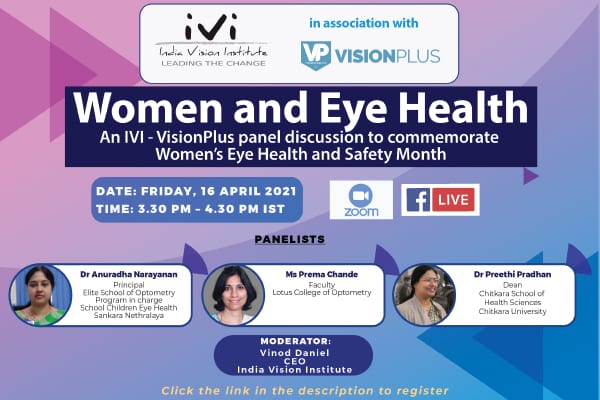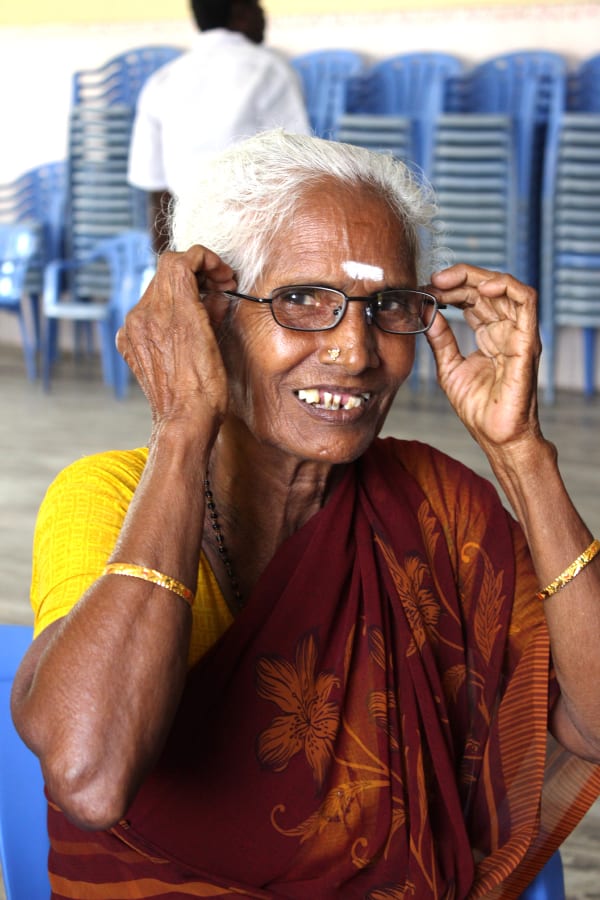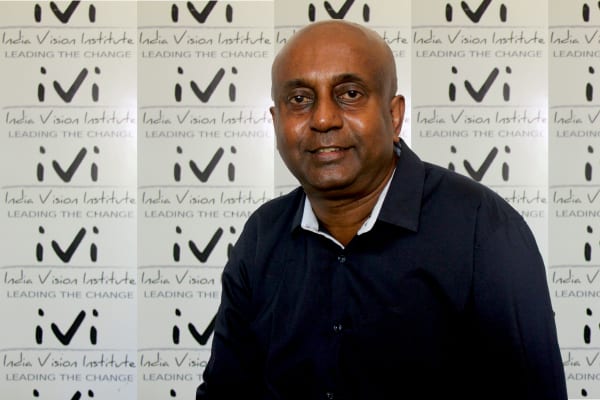Women and Eye Health
Women are 12% more likely to have vision loss than men. Worldwide, of the 1.1 billion people with vision loss, 609 million are female compared to 497 million males. Varun Nambiar tells us more.
In India, the risk of blindness among females is 1.41 times higher compared to males in urban areas and 1.51 times higher in rural areas. Women make up for 60% of Glaucoma cases reported worldwide, and in India they are 60% more prone to blindness due to Cataract than men are. This empirical data paints a compelling picture, highlighting the glaring eye health gap that exists between women and men, and underscores the need to make vision care more accessible to women in India.
As we commemorate ‘Women’s Eye Health and Safety Month’ this April, participants at an India Vision Institute (IVI)-VisionPlus Magazine hosted ‘Women and Eye Health’ online panel session, April 16, participated in a stimulating discussion on women’s eye health issues. Moderated by Vinod Daniel, the panel at the discussion comprised Dr Anuradha Narayanan, Principal, Elite School of Optometry and Program-in-Charge, School Children Eye Health, Sankara Nethralaya, Dr Preethi Pradhan, Dean, Chitkara School of Health Sciences, Chitkara University, and Ms Prema Chande, Faculty, Lotus College of Optometry.
Studies show that even in developed countries, women appear to have lower use of eye care services. Fewer women are able to afford spectacles compared to men. In India, studies show that females are indeed more likely to have vision impairment. According to Dr Anuradha Narayanan, research conducted as part of the Refractive Error Among Children (REACH) program in five Indian states showed that a higher percentage of female school children have vision impairment and low vision compared to their male counterparts.
The higher rate of vision impairment and low vision among females has not translated into a greater societal impetus towards ensuring that they get adequate access to vision care. Citing the gender disparity that exists in this regard, Mr Daniel asked, “What are the barriers stopping women from accessing eye health care services?” The panelists identified several barriers obstructing women’s access to quality vision care. These include delayed diagnosis, unwillingness to uptake treatment, and a lack of follow-up protocol compliance.
“Affordability of treatment is an issue for women. Many women don’t have the decision-making power within the family to take a call on whether or not to access treatment for their vision health problems,” said Dr Preethi Pradhan. Expressing concern at the fact that women globally bear the greater eye disease burden, Dr Prema Chande outlined the lack of eye health awareness among women, hesitancy to access eye health care, and social barriers such as the prevalence of patriarchal privilege as challenges contributing to the gender gap in eye health.
In Indian society, the gender roles assigned to women mean that they are largely expected to stay focused on family life, and many avoid seeking treatment for their eye health-related conditions for fear of burdening their relatives. “In many homes, women refuse to go for eye surgery because they worry that their loved ones at home will be left uncared for,” Dr Anuradha Narayanan observed. The stigma attached to wearing spectacles also holds many women back from getting screened for vision health conditions and wearing eye glasses.
Mr Daniel requested the panelists for suggestions on ways to overcome the barriers to women’s eye health in India. The panel agreed that improving female access to quality education will be an important step in the right direction. Educated women are more likely to be aware of the benefits of eye health. They will also spread awareness within their families and the wider community. Modern technology can be a force multiplier. As Dr Preethi Pradhan pointed out, “Technology is making access happen in a better way. There are pilot projects making use of tele-optometry and tele-ophthalmology to provide access. This needs to increase, technology should be harnessed at scale.”
Acknowledging the opportunities that modern information technology can bring to eye health care, Mr Daniel also directed the panel to address concerns that relying on technology too much may be disadvantageous for women in some circumstances, especially in a developing country like India. Dr Prema Chande was of the view that over-reliance on modern information technology can be problematic due to infrastructural bottlenecks and the technology divide between urban and rural India.
The eye health gender gap poses a multi-faceted challenge for vision care practitioners, academia and industry alike. It needs to be tackled in a multi-pronged manner. If we are to bridge the gender gap, there cannot be a one-size-fits-all approach. Women are not a monolith; different women face different hurdles on the path to access quality eye care. Better education, spreading awareness, and using modern information technology are important. Women can lead by example – wear your spectacles proudly and spread the word about the gift of good vision.









